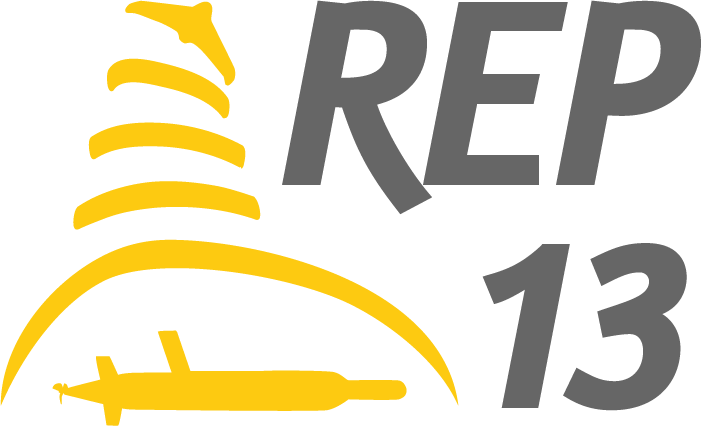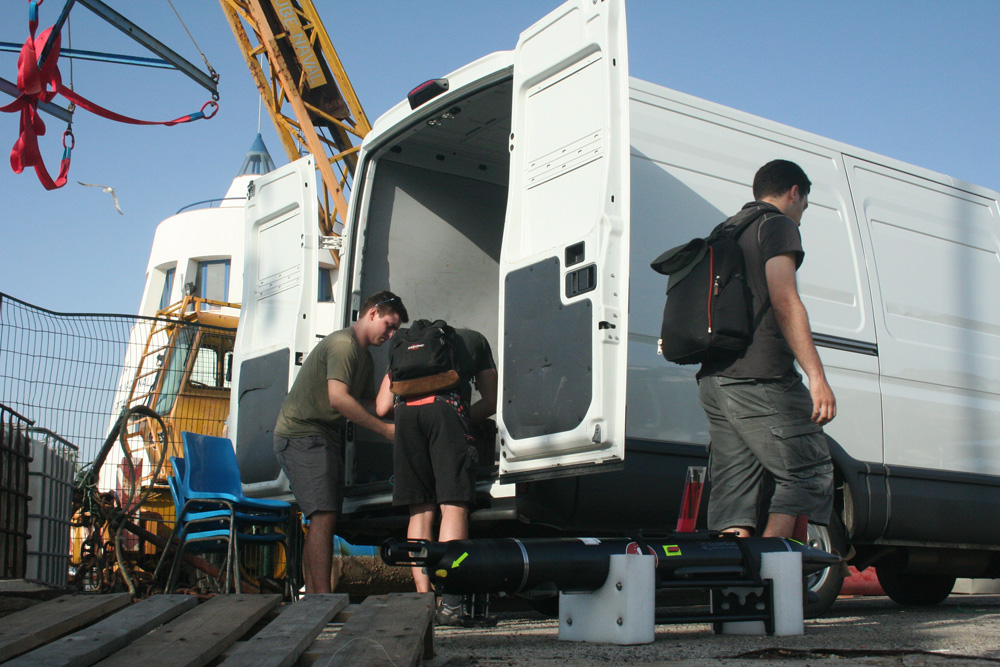On Wednesday July 10th, the AUV team split to preform varying operations in the harbor as also further away from shore. An ongoing collaboration with the Maritime Police, the team in the harbor replicated the exercise from the previous day, using an AUV to survey for simulated drug packages at the harbor bottom. In a challenging scenario such as this, several possible targets where picked up by the sidecan and multibeam sonars on the AUV; after careful data analysis, the packages were successfully located. Off shore, a different AUV, executed several exercises in the upper water-column performing yo-yo patterns controlled and commanded by MBARI 's T-REX automated planning and execution framework.
After a harsh landing in the morning, the UAV's were kept going on numerous flight tests. A software bug detected on the first day, on X8-00 was solved. During the afternoon, a live video feed allowed the detection of a possible coastal front very close to the ship. A small RHIB was sent to verify visually; visible accumulation of sargassum and frothing were positive indications of a front. A lack of availability of an AUV with a CTD (Conductivity, Temperature and Depth) sensor prohibited accurate analysis of the frontal zone. This finding however, opened a discussion about the search pattern of the UAV. To locate a front, the survey pattern might change from a spiral around one point or a rectangular pattern to a "flower" pattern, executing several circles with well-defined way points. This might lower the chances of missing a front while executing maneuvers parallel to the front.
During the day we had the company of several guests on board the NRP Bacamarte who were interested in various aspects of the experiment and bringing a diverse set of skills. A representative from Evologics, an acoustic modem manufacturer, has been following the operations to understand how the DUNE system works. This piece of software is integrated on both AUV's and UAV's, and it is able to manage the control, navigation, communication and sensors systems. A graduate student from the Norwegian University of Science and Technology is also onboard to perform tests with an infra-red camera compatible with the X8 UAV; this is expected to be a good test to detect thermal fronts from the air.

















